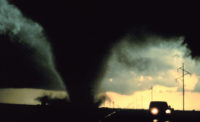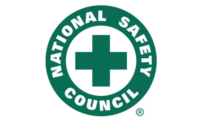
Nearly six million workers are injured on the job every year in the U.S., making first aid programs a necessity in every work environment. Creating an effective program within your facility requires adequate supplies to respond to emergencies and personnel properly trained in performing basic first aid. But how do you determine what constitutes “adequate” supplies and “properly trained” personnel?
First aid program basics
OSHA 29 CFR 1910.151 states: “In the absence of an infirmary, clinic, or hospital in near proximity to the workplace which is used for the treatment of all injured employees, a person or persons shall be adequately trained to render first aid.” This regulation advises employers to designate a specific person within the facility to manage the first aid program. This individual should be versed in the procedures of basic first aid and should be able to determine the types and amounts of first aid supplies required in their workplace. This person does not need to have a medical background but should be willing to work with local emergency personnel to determine the first aid requirements of the specific site.OSHA 29 CFR 1910.151 further states: “Adequate first aid supplies shall be readily available.” The regulation is silent, however, as to what constitutes “adequate” supplies.
Contents & kit types
For guidance on what first aid supplies are needed, the OSHA regulation includes Appendix A, which calls upon an American National Standards Institute standard (ANSI Z308.1-1998) that more precisely outlines the supplies generally needed in a basic first aid kit. This ANSI standard is currently not a national mandatory regulation (although the ANSI standards have been adopted as requirements by more than 20 states), but it does provide a useful guideline to follow when determining what to include in your workplace first aid kit.ANSI Z308.1-1998 lists the following minimum workplace first aid kit requirements:
- 1 absorbent compress, 32 sq. in. with no side smaller than 4 in.
- 16 adhesive bandages, 1 x 3 in.
- 1 adhesive tape, 3/8 in. x 5 yd.
- 10 antiseptic applications, .5 fl. oz.
- 6 burn treatment applications, .5 oz.
- 2 pairs of medical exam gloves
- 4 sterile pads, 3 x 3 in.
- 1 triangular bandage, 40 x 40 x 56 in.
- Type I kits are intended for use in a stationary, indoor setting and should have a means by which to be mounted.
- Type II kits are intended for use in a portable, indoor setting and should have a carrying handle.
- Type III kits are intended for use in portable, indoor or outdoor applications and should have a carrying handle and a means by which to be mounted.
In ANSI Z308.1-2009; Type III kits are broken down into two distinct categories:
- Type III kits are intended for use in portable indoor or outdoor settings where the potential for damage to the kit is minimal
- Type IV kits are intended for use in portable indoor or outdoor settings where the potential for damage to the kit is significant. These kits should be made of metal.

